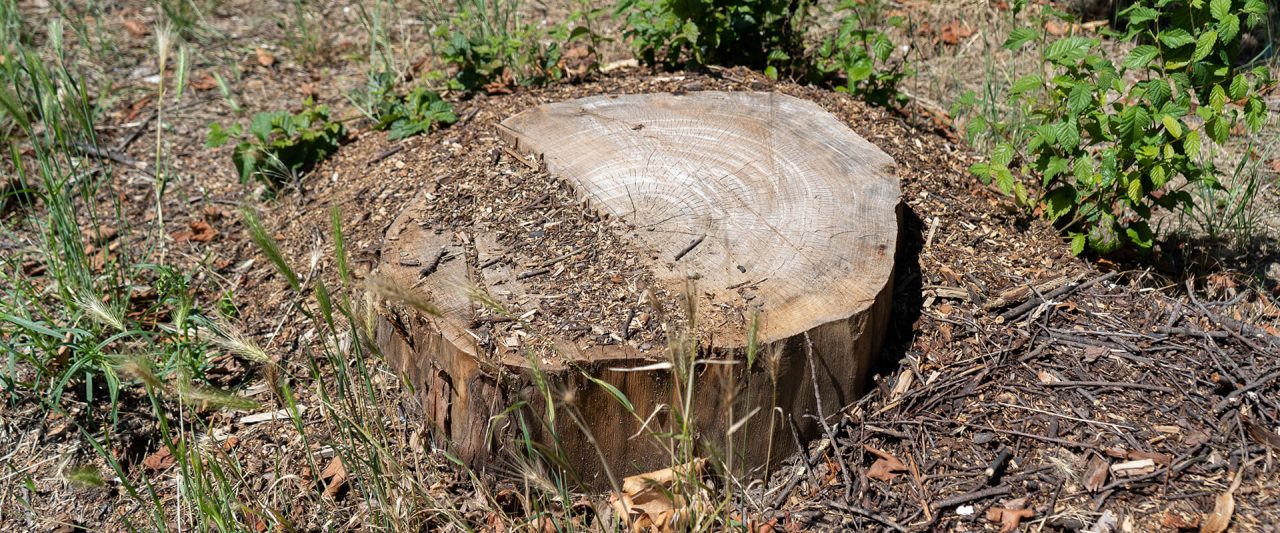Rendering Nature

Project details
- Year
- 2020
- Programme
- advertising-beyond
- Practices
- Autonomous
- Minor
- Hacking
Rendering can be defined as: displaying, translating and giving back. All synonyms which together comprehend this project. Rendering nature displays nature, it translates it to our frequencies of understanding and it gives a piece of nature back at the same time.
But unfortunately for now, we take more than we give. Nature disappears. The number of trees in the Netherlands shrinks by 1% annually. A decrease that is proportionally twice as large as in the Amazon. Plans are currently to log 1231 hectares versus 304 hectares of new forest. But do we actually know what we cut down?

We know that a tree inhales carbon dioxide and exhales oxygen. We know that it is home to life above and below ground. But do we also know that it communicates with other trees, that it exchanges nutrients and takes care for the old and sick? Do we know in what intelligent way it develops?
This, the Hungarian biologist, Aristid Lindenmayer managed to crack for the first time in the 1960s. In his book, The Algorithmic Beauty of Plants, the researcher showed that it’s possible to calculate how flora develops using a grammar system, also known as L-system.
Based on the L-system, Rendering Nature reincarnates a fallen tree by simulating its intelligent growth process which is being expressed on and through the raw materials of this tree.
Rendering nature is still a work in progress. The machine will be scaled up and the brush refined to achieve a true-to-life representation of the fallen elm. The materials with and on which the machine draws have already been developed. By considering the raw matter of this dead tree as the base for the materials on which to draw on and with, the tree reincarnates not only through the L system, but also through its new function.
Monday, the 18th of May, 4 elms were logged in Rotterdam West. These were contaminated with the Dutch elm disease and so had to be cut down and processed immediately to prevent spreading.
Due to the infectivity of the disease, the strains had to be processed immediately. This was done by the planer, but before, the bark had to be removed. Underneath, the presence of the disease is clearly visible.
Leo Hoegen processed the shavings into paper. This manual, labor-intensive process is only practiced by a few in the Netherlands. The process in which unnecessary substances are cooked from the shavings, this shavings are ground into pulp, after which it can be scooped, sheet by sheet of, after which be hung to dry.
Another part of the wood has been processed into charcoal. For this, the pieces had been reduced in order to be able to fit them in a tin. After the tin had been in the fire for 1.5 hours, the wood had been transformed into pure charcoal.
Even though charcoal in itself is a great material to draw the lines on the paper, the fragility in combination with the machine’s pristine nature makes a charcoal liquid a better working material. This repetitive grinding and sieving process resulted in a powdered pigment.
Many different tests had led to the final recipe for making charcoal ink. A combination of the pigment, water and Arabic gum ensures an opaque, but also thin liquid result.
Rendering Nature will be exhibited and grow at the same place as where it was logged. The outcome, the drawn sheets will be sold. The profit of this will be invested in local reforestation. In addition, sheets will be sent to policymakers to make them aware of this natural intelligence and thus loss when logging.
Acknowledgments:
Roland Smit →
Leo Hoegen →
Dr. Bas Dutilh →
Prof. dr. Kirsten ten Tusscher →
Ir. Bas van den Herik →
Gemeente Rotterdam →